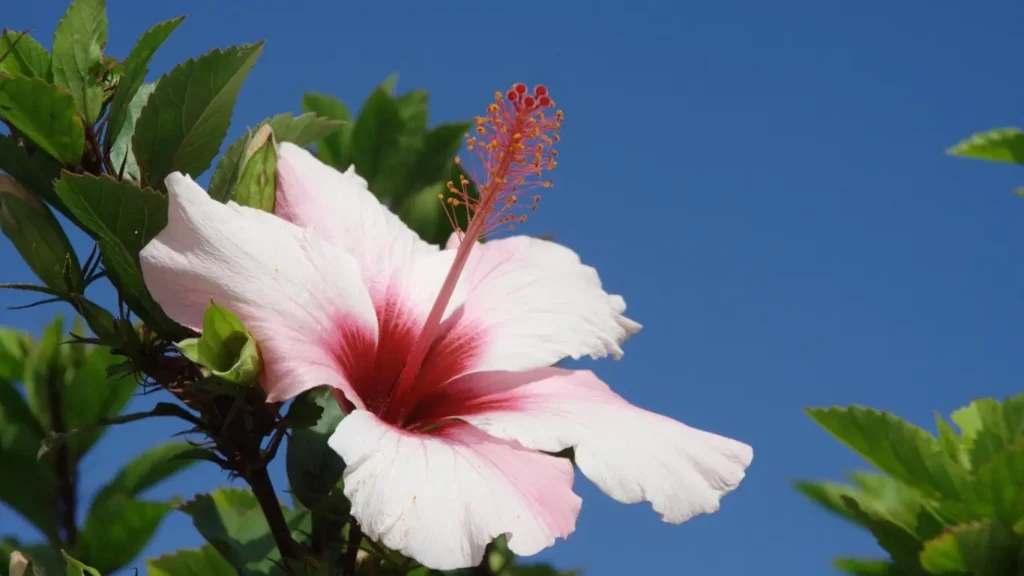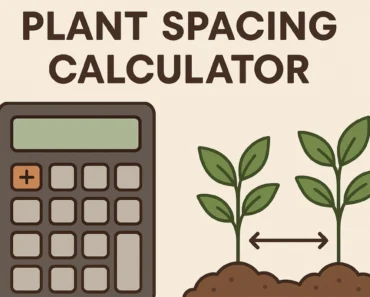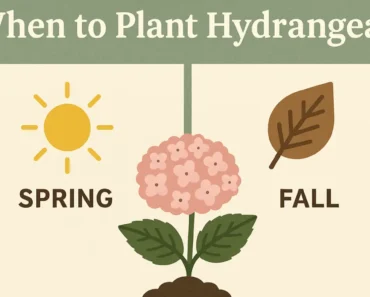
Pruning hibiscus is essential to ensure your plant remains healthy, vibrant, and full of blooms. This guide covers everything you need to know about when and how to prune your hibiscus, from timing to tools and techniques. By following these simple steps, you’ll promote healthy growth and achieve beautiful flowers year after year.
Table of Contents
Why Pruning Hibiscus Is Important
Hibiscus is a stunning plant known for its large, colourful flowers. Pruning is essential to maintain the plant’s shape, remove dead or damaged branches, and encourage the growth of new flowers. When done correctly, pruning helps prevent disease, reduces the risk of pests, and improves the overall aesthetic of the plant. Proper hibiscus care, including pruning, ensures your plant remains healthy and continues to bloom beautifully.
- Benefits of Pruning:
- Encourages new growth and flowers.
- Prevents overcrowding and improves air circulation.
- Removes dead, damaged, or diseased branches.
- Helps maintain the plant’s shape.
For detailed guidance on why pruning is crucial, refer to The Spruce’s comprehensive guide.
When to Prune Hibiscus
Knowing the right time to prune hibiscus is just as important as knowing how to do it. Pruning at the wrong time can hinder the plant’s growth and even damage it. The best time to prune hibiscus depends on the type of hibiscus you have and the climate in which it’s growing.
- Tropical Hibiscus:
- When to Prune: Spring is the ideal time to prune tropical hibiscus before the plant starts its active growing season.
- Why: Pruning in early spring helps remove winter damage and encourages fresh growth in warmer weather.
- Hardy Hibiscus:
- When to Prune: Before new growth begins, late winter or early spring is the best time to prune hardy hibiscus varieties.
- Why: Pruning in late winter helps prevent frost damage to new shoots.
- Pruning After Flowering:
- For some varieties, it’s beneficial to prune after the plant has finished blooming. This ensures that you’re not cutting off flowers that are yet to bloom.
For more detailed timing advice, visit The Spruce’s guide on pruning hibiscus.
Tools You’ll Need to Prune Hibiscus
Using the right tools for pruning hibiscus ensures clean cuts and helps avoid damage to the plant. Here are the tools you’ll need for a successful pruning session:
- Bypass Pruners: Ideal for small, thin branches.
- Loppers: For cutting thicker branches (over 1 inch in diameter).
- Gloves: Protect your hands from thorns and sap.
- Sharpening Stone: To keep your tools sharp for clean cuts.
It’s essential to ensure that your tools are clean and sharp to avoid spreading diseases from one plant to another.
Step-by-Step Guide on How to Prune Hibiscus
Pruning hibiscus involves a few simple steps that help encourage healthy growth. Here’s how to do it:
- Remove Dead or Damaged Wood:
- Inspect your hibiscus for any branches that are broken, diseased, or dead. Cut them off at the base of the branch.
- Then the Plant:
- Thin-out areas of the plant that are too crowded. This allows better air circulation and ensures that all parts of the plant get enough sunlight.
- Shape the Plant:
- Trim the hibiscus to maintain its desired shape. If you want a more compact shape, prune the plant back to encourage bushier growth. If you prefer a tree form, trim the lower branches to expose the trunk.
- Cut Back Old Wood:
- For older hibiscus plants that have become leggy, it’s essential to prune back the old wood to encourage new, healthier growth.
- Prune After Blooming (Optional):
- Once the plant has finished flowering, you can trim back any spent blooms. This helps the plant focus its energy on producing more flowers next season.
For a visual guide on pruning techniques, check out this YouTube video on prune hibiscus.
Post-Pruning Care for Hibiscus
After pruning, taking care of your hibiscus is important to help it recover and thrive. Here are some tips for post-pruning care:
- Watering:
- Water your hibiscus deeply after pruning to help settle the soil and encourage root growth. Make sure the soil remains moist but not soggy.
- Mulching:
- Apply a 2–3 inch layer of mulch around the base of the plant. This helps retain moisture, regulate soil temperature, and suppress weeds.
- Fertilizing:
- Apply a balanced, slow-release fertilizer in early spring to promote healthy growth and encourage flowering.
- Regular Monitoring:
- After pruning, monitor your hibiscus regularly for pests or diseases. Check for aphids, spider mites, or fungal infections and treat them accordingly.
Troubleshooting Common Hibiscus Problems
Sometimes, hibiscus plants can encounter issues even with the best pruning practices. Here are some common problems and solutions:
- Poor Blooming:
- Cause: Improper pruning, incorrect timing, or insufficient sunlight.
- Solution: Ensure proper pruning timing and ensure the plant receives enough sunlight (at least 6 hours of direct sunlight daily).
- Yellowing Leaves:
- Cause: Overwatering, nutrient deficiencies, or pests.
- Solution: Adjust watering habits, check for pests, and use a balanced fertilizer to correct nutrient imbalances.
- Pest Infestations:
- Cause: Aphids, mealybugs, and spider mites are common pests that can affect hibiscus plants.
- Solution: Use organic insecticides or introduce natural predators like ladybugs to control pest populations.
Frequently Asked Questions About Pruning Hibiscus
- Q1: Can I prune hibiscus in the summer?
- A1: While it’s best to prune hibiscus in early spring, you can trim dead or damaged wood during the summer if necessary.
- Q2: Why isn’t my hibiscus blooming after pruning?
- A2: This could be due to improper pruning timing, or the plant may need more sunlight or nutrients to bloom properly.
- Q3: How often should I prune my hibiscus?
- A3: Hibiscus plants generally need light pruning every year, with more extensive pruning done every 2–3 years for older plants.
- Q4: Should I prune hibiscus after flowering?
- A4: Removing spent flowers after blooming is beneficial to encourage new growth and more blooms next season.
- Q5: Can I prune my hibiscus tree standard?
- A5: You can prune hibiscus to form a tree by cutting back the lower branches and allowing the main trunk to grow.
Conclusion: Pruning Hibiscus for Healthy Growth and Beautiful Blooms
- Pruning hibiscus can be vital to keeping your plant’s health, form, and beauty. If you follow the correct pruning methods and timings it is possible to make sure that your hibiscus grows and continues to produce stunning beautiful, attractive flowers each year. Regular maintenance, which includes fertilizing, watering and a close eye on pests will ensure that your hibiscus stays strong and healthy.
Author
George Wine is a seasoned gardening expert with over 20 years of experience in the field of horticulture. His passion for plants and nature has driven his career, where he has honed his skills in various aspects of gardening, from landscape design to plant care. George holds a Master of Science in Horticulture from the University of California, Davis (UC Davis), a prestigious institution known for its research and advancements in plant science.
Throughout his career, George has worked with a diverse range of clients, offering tailored solutions to enhance outdoor spaces and create thriving gardens. His knowledge and expertise allow him to provide invaluable advice, ensuring that both novice and experienced gardeners achieve their gardening goals. Whether you’re looking for tips on sustainable gardening practices, innovative design ideas, or advice on specific plant species, George is here to help you cultivate the garden of your dreams.




